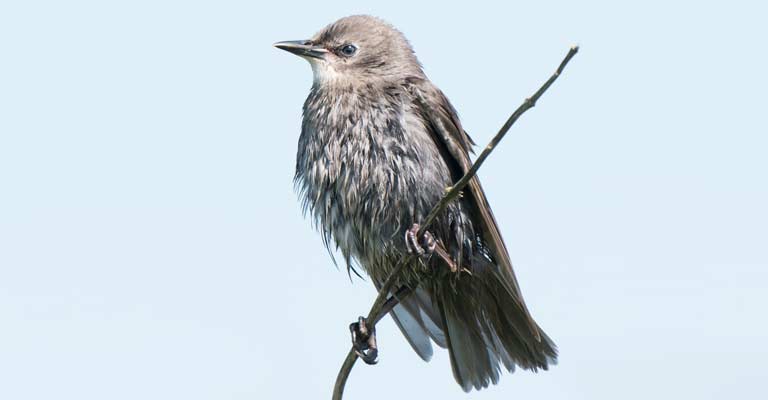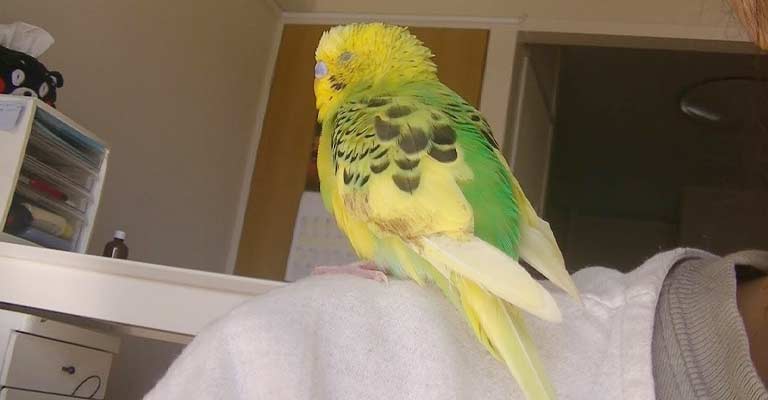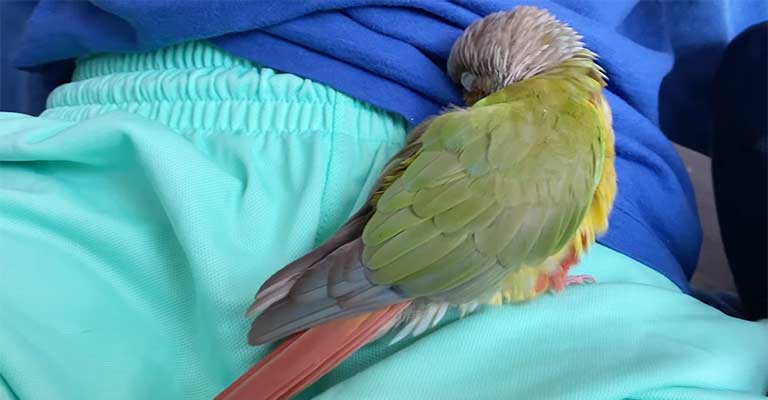In the intricate tapestry of avian health, one often-overlooked yet increasingly prevalent challenge is the enigmatic presence of gastric yeast infections in birds.
A subtle adversary, these infections disrupt the delicate balance within the avian gastrointestinal system, posing a multifaceted threat to our feathered companions.
As custodians of diverse avian species, understanding the nuances of this ailment becomes paramount for avian enthusiasts, veterinarians, and conservationists alike.
This article embarks on a journey into the world of gastric yeast infection in birds, unraveling the complexities that underlie their manifestation, impact, and potential consequences for avian populations.
Join us as we delve into the fascinating realm where science meets avian ecology, exploring the causes, symptoms, and implications of gastric yeast infections in birds, ultimately aiming to foster a deeper appreciation for the intricacies of avian health and well-being.

Gastric Yeast Infection in Birds: Unraveling Nature’s Intricate Challenge
Birds, with their diverse species and unique ecological niches, face a myriad of health challenges. One often underestimated but increasingly observed issue is a gastric yeast infection.
Gastric yeast infections, caused by various yeast species such as Candida, disrupt the delicate balance of the avian gastrointestinal system.
The presence of these opportunistic pathogens can lead to a range of symptoms, from subtle behavioral changes to severe physiological repercussions.
Causes and Contributing Factors
Several factors contribute to the onset of gastric yeast infections in birds. A weakened immune system, often triggered by stress, malnutrition, or concurrent illnesses, creates an opportune environment for yeast overgrowth.
Dietary imbalances, environmental stressors, and overcrowding in aviaries or natural habitats further amplify the risk.
Symptoms: Decoding Avian Distress Signals
Recognizing the symptoms of gastric yeast infections is crucial for timely intervention. Birds afflicted by this ailment may exhibit changes in feeding behavior, including reduced appetite and difficulty swallowing.
Regurgitation, weight loss, and lethargy are common indicators, while more severe cases may manifest in diarrhea and dehydration.
Diagnostic Challenges
Diagnosing gastric yeast infections in birds poses challenges due to the variability in symptoms and the need for specialized testing.
Avian veterinarians employ techniques such as endoscopy, crop cytology, and fungal cultures to accurately identify the yeast species and determine the extent of infection.
Implications for Avian Health and Conservation
The impact of gastric yeast infections extends beyond individual birds to affect entire populations. In captive settings, such as aviaries and breeding facilities, the rapid spread of infections poses a threat to flock health.
In the wild, these infections can contribute to population declines, especially in vulnerable or endangered species.
Avian Immunity: A Balancing Act
Understanding the interplay between avian immunity and yeast infections is crucial. Stressors like habitat loss, climate change, and pollution can compromise birds’ immune responses, exacerbating their susceptibility to opportunistic infections.
Conservation efforts must address both direct threats and underlying stressors to ensure the resilience of avian populations.
Treatment Approaches: Navigating the Avian Pharmacy
Managing gastric yeast infections involves a multifaceted approach. Antifungal medications, dietary adjustments, and supportive care are common components of treatment plans.
However, the challenge lies in tailoring interventions to each species’ specific needs, considering factors such as diet, habitat, and susceptibility.
Preventive Strategies: Safeguarding Avian Well-being
Preventing gastric yeast infections requires a proactive stance. Implementing stringent biosecurity measures in aviaries, promoting balanced and nutritious diets, and minimizing stressors are pivotal in averting outbreaks.
Education and awareness campaigns among avian caretakers and conservationists can further contribute to the prevention of this insidious ailment.
Research Frontiers: Advancing Avian Health Knowledge
Ongoing research is essential for advancing our understanding of gastric yeast infections in birds. Investigating host-pathogen interactions, identifying novel treatment modalities, and developing diagnostic tools tailored to avian species are critical endeavors.
Collaborative efforts between researchers, veterinarians, and conservationists are key to addressing this health challenge comprehensively.
The Human Connection: Ethical Avian Care
As stewards of the avian world, our responsibility extends to ethical avian care.
Whether in captivity or the wild, promoting environments that minimize stress, provide adequate nutrition, and allow for natural behaviors is fundamental to preventing not only gastric yeast infections but a spectrum of health issues.
What Are The Signs Of Fungal Infection In Birds?

Birds, with their intricate respiratory and digestive systems, are susceptible to various health challenges, including fungal infections. These infections can affect different parts of a bird’s body, manifesting in various symptoms.
Recognizing the signs of fungal infection is crucial for timely intervention and effective treatment. In this comprehensive overview, we explore the common indicators of fungal infections in birds.
Respiratory Distress
One of the hallmark signs of a fungal infection in birds is respiratory distress. Infected birds may exhibit labored breathing, wheezing, or coughing. In severe cases, nasal discharge or audible clicks during breathing may be observed.
These respiratory symptoms often indicate an infection in the respiratory tract, such as the lungs or air sacs.
Changes in Feeding Behavior
Fungal infections can impact a bird’s ability to eat and digest food. Birds may show a reduced appetite, reluctance to eat, or difficulty swallowing. Regurgitation or vomiting can also occur, reflecting the discomfort caused by the infection.
Observing alterations in feeding behavior is crucial for early detection and prompt intervention.
Plumage and Skin Abnormalities
External signs of fungal infections may manifest in the bird’s plumage and skin. Feather abnormalities, such as ruffled or disheveled feathers, may be apparent.
Skin lesions or abnormalities, including discoloration, swelling, or the presence of nodules, can also be indicative of a fungal infection affecting the skin or subcutaneous tissues.
Changes in Droppings
Monitoring a bird’s droppings is an essential aspect of health assessment. Fungal infections can influence the color, consistency, and frequency of droppings. Watery or discolored droppings, often with an unusual odor, may suggest gastrointestinal involvement.
Changes in the urates (white part of the droppings) or the appearance of mucus can be additional clues.
Neurological Signs
Certain fungal infections have the potential to affect the nervous system, leading to neurological symptoms. Birds may exhibit abnormal head movements, seizures, or a lack of coordination.
These signs necessitate immediate veterinary attention, as neurological complications can have severe consequences if left untreated.
Weight Loss and General Lethargy
Fungal infections can sap a bird’s energy, resulting in general lethargy and a noticeable decline in activity levels. Weight loss may become apparent as the infection progresses, reflecting the physiological toll it takes on the bird’s overall health.
Monitoring changes in weight and activity is crucial for assessing the severity of the infection.
Eye and Beak Abnormalities
Infections affecting the eyes or beak can lead to specific symptoms. Watery or swollen eyes, ocular discharge, or changes in the appearance of the beak, such as deformities or lesions, may indicate a fungal infection. These signs may be particularly evident in species with exposed facial skin.
Changes in Vocalization
Birds infected with fungi may display alterations in vocalization. Changes in the pitch, volume, or frequency of vocalizations can be subtle yet significant indicators of distress. Paying attention to vocal cues can aid in the early identification of potential health issues.
Is Avian Gastric Yeast Curable?

Avian gastric yeast infection, caused by various Candida species, presents a complex challenge for bird caretakers and veterinarians alike.
The question of whether avian gastric yeast is curable involves a nuanced understanding of the infection, its underlying causes, and the available treatment options.
In this exploration, we delve into the intricacies of managing and treating avian gastric yeast infections.
Treatment Approaches
While avian gastric yeast infections are not always considered curable in the conventional sense, effective management is attainable through a combination of targeted interventions. Treatment typically involves:
Antifungal Medications
Veterinarians commonly prescribe antifungal medications to combat the overgrowth of yeast in the avian digestive system. Medications such as nystatin or fluconazole may be administered orally or incorporated into the bird’s diet.
Dietary Adjustments
Tailoring the bird’s diet is a crucial component of treatment. Providing a nutritionally balanced diet that supports the bird’s overall health can contribute to immune system strength and aid in combating the infection.
Additionally, adjusting the diet to limit sources of excess sugar, which can promote yeast growth, is often recommended.
Supportive Care
Birds with gastric yeast infections may require supportive care to address symptoms such as dehydration, weight loss, and lethargy. Providing fluids, nutritional supplements, and a stress-free environment can support the bird’s recovery.
Challenges in Treatment
Avian gastric yeast infections pose challenges due to the unique physiology of birds and the often subtle nature of symptoms.
Diagnosis can be intricate, requiring specialized testing such as endoscopy, crop cytology, or fungal cultures. Additionally, individual birds may respond differently to treatment, and recurrence is possible, especially if underlying stressors persist.
Preventive Measures
While the term “cure” may not be universally applicable to avian gastric yeast infections, preventive measures play a crucial role in managing the condition.
Biosecurity practices, including quarantine protocols for new birds, minimizing stressors in aviaries, and promoting a healthy environment, contribute to preventing the initial onset or recurrence of these infections.
The Role of Veterinary Monitoring
Regular veterinary check-ups are essential for birds with a history of gastric yeast infections. Veterinarians can assess the bird’s overall health, monitor for any signs of recurrence, and adjust treatment plans as needed.
Ongoing communication between bird caretakers and veterinarians is key to addressing changes in the bird’s condition promptly.
FAQs
What are the primary symptoms of gastric yeast infections in birds?
Gastric yeast infections in birds often present with symptoms such as reduced appetite, difficulty swallowing, regurgitation, weight loss, lethargy, diarrhea, and dehydration.
How is gastric yeast infection diagnosed in birds?
Avian veterinarians use various diagnostic methods, including endoscopy, crop cytology, and fungal cultures, to identify the presence of yeast species and determine the extent of infection.
What are the contributing factors to gastric yeast infections in birds?
Several factors contribute to the onset of gastric yeast infections, including a weakened immune system triggered by stress, malnutrition, or concurrent illnesses. Dietary imbalances, environmental stressors, and overcrowding in aviaries or natural habitats further increase the risk of infection.
How can avian caretakers prevent gastric yeast infections in their birds?
Preventive measures include implementing stringent biosecurity in aviaries, promoting balanced and nutritious diets, and minimizing stressors.
Are there specific treatment options for gastric yeast infections in different bird species?
Treatment approaches vary, involving antifungal medications, dietary adjustments, and supportive care. Tailoring interventions to each species’ specific needs, considering factors such as diet, habitat, and susceptibility, is essential for the effective management of gastric yeast infections in diverse bird species.
Conclusion
The exploration of gastric yeast infections in birds underscores the imperative for heightened vigilance and understanding within the realms of avian health.
As we navigate the complexities of this ailment, it becomes evident that a comprehensive approach is necessary, involving researchers, veterinarians, and caretakers alike.
The multifaceted nature of these infections warrants ongoing research to further unravel their intricacies, enabling the development of targeted interventions and preventive measures.
By fostering a collective awareness and appreciation for the nuances of avian health, we can actively contribute to the well-being of our feathered companions.
In the face of this enigma, collaboration between the scientific community and those engaged in avian care becomes paramount.
Together, we can strive to mitigate the impact of gastric yeast infections, ensuring a healthier future for the diverse array of bird species that share our environment.